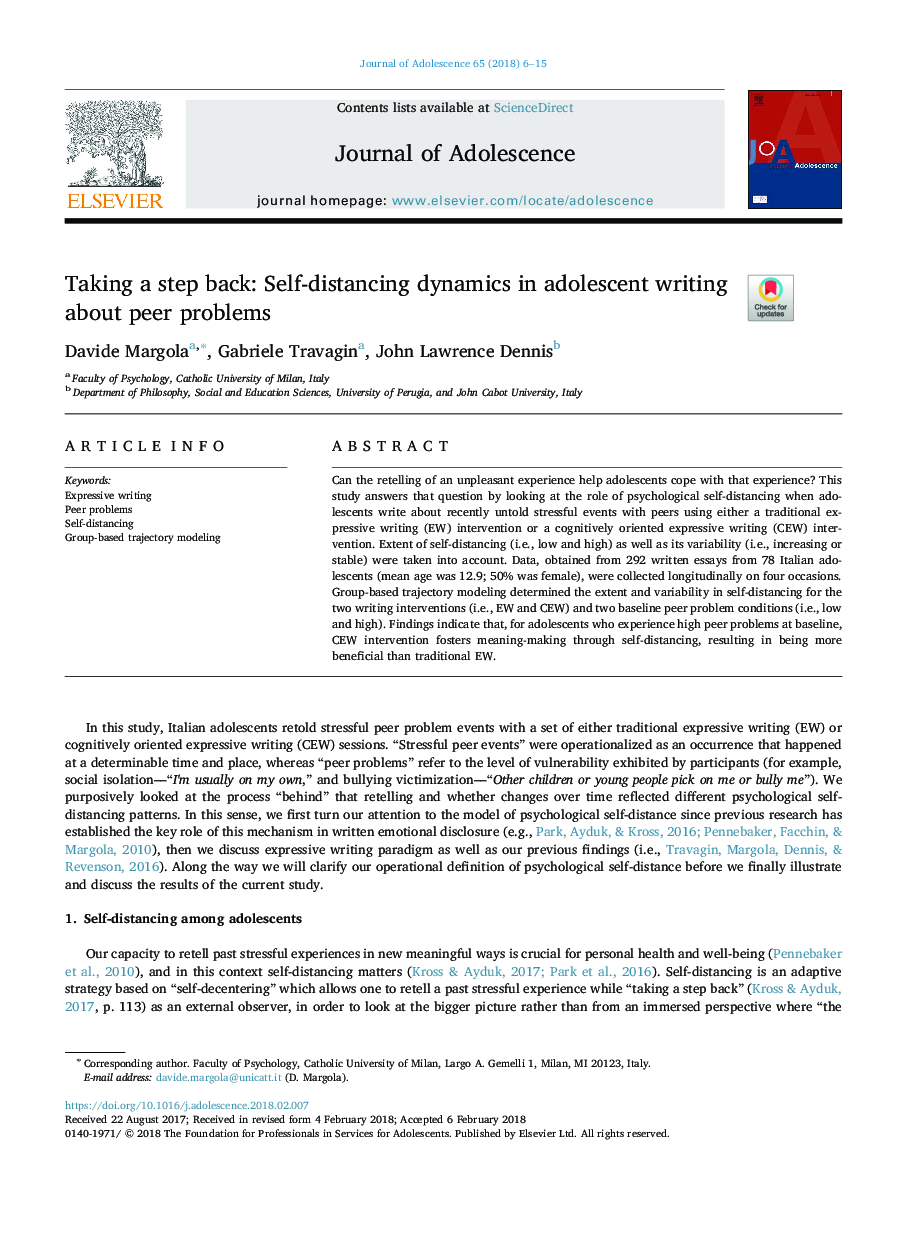| Article ID | Journal | Published Year | Pages | File Type |
|---|---|---|---|---|
| 7240820 | Journal of Adolescence | 2018 | 10 Pages |
Abstract
Can the retelling of an unpleasant experience help adolescents cope with that experience? This study answers that question by looking at the role of psychological self-distancing when adolescents write about recently untold stressful events with peers using either a traditional expressive writing (EW) intervention or a cognitively oriented expressive writing (CEW) intervention. Extent of self-distancing (i.e., low and high) as well as its variability (i.e., increasing or stable) were taken into account. Data, obtained from 292 written essays from 78 Italian adolescents (mean age was 12.9; 50% was female), were collected longitudinally on four occasions. Group-based trajectory modeling determined the extent and variability in self-distancing for the two writing interventions (i.e., EW and CEW) and two baseline peer problem conditions (i.e., low and high). Findings indicate that, for adolescents who experience high peer problems at baseline, CEW intervention fosters meaning-making through self-distancing, resulting in being more beneficial than traditional EW.
Related Topics
Health Sciences
Medicine and Dentistry
Public Health and Health Policy
Authors
Davide Margola, Gabriele Travagin, John Lawrence Dennis,
